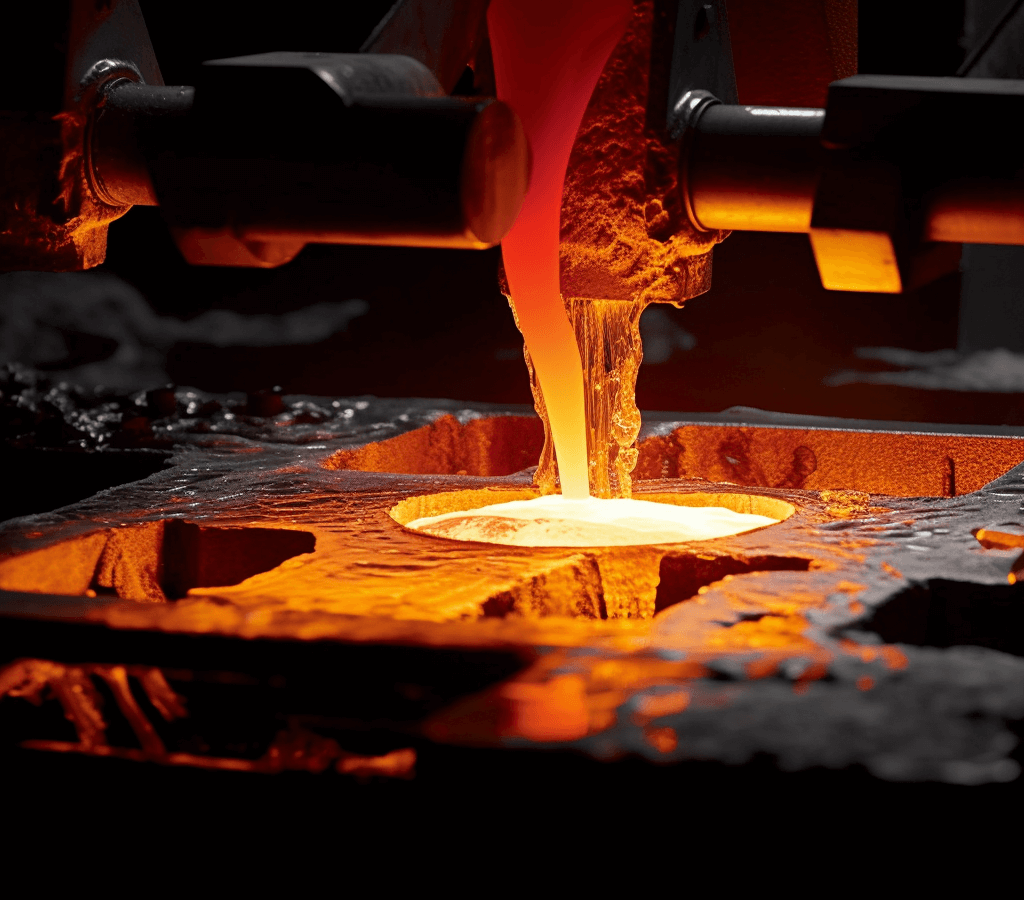You’ve probably heard the term ‘die casting’ and wondered what it’s all about. Let’s unravel this manufacturing marvel together. Get ready to have your questions answered and become an informal expert on the subject!
You might be wondering:
What is the die casting part?
Die casting is a precise metal casting process that involves forcing molten metal under high pressure into a mold cavity. The mold cavity is designed in two hardened tool steel dies which have been machined into shape, thus the name “die casting.”
There’s more to die casting than just molten metal and molds. Stick with me, and you’ll discover the intricate details, benefits, and applications of this technique. I will give you a comprehensive look at this remarkable technique.

The Heart of the Process – How Does Die Casting Work?
Die casting has been a cornerstone of manufacturing for over a century, thanks to its accuracy and efficiency. The process starts with a non-ferrous metal, commonly aluminum, magnesium, or zinc. This metal is heated until it turns into a molten state.
Next, the molten metal is rapidly injected into a die or mold under high pressure using a hydraulic or mechanical piston. This ensures the metal fills every crevice of the die, capturing even the most intricate details. Once the metal has solidified, the die is opened, and the newly formed part is ejected.
The Evolution of Die Casting: A Glimpse into History:
Die casting wasn’t always as advanced as it is today. It began in the early 1800s, primarily for the printing industry. However, the need for consistent, quality products in other sectors propelled innovations, refining the process over time.
Modern Innovations & Future Potential:
With the 21st century came groundbreaking innovations like computer-aided design and simulations, drastically improving efficiency and precision. Looking ahead, the horizon promises more sustainable materials and energy-efficient processes.
Environmental Implications of Die Casting:
Sustainability is the buzzword today. Modern die casting is leaning into eco-friendliness with recyclable metals and waste reduction initiatives. It’s not just about making parts; it’s about cherishing our planet.
The Perks of Die Casting:
Die casting offers a plethora of benefits, making it a go-to for various industries. Its advantages include:
- Precision: Die casting allows for tight tolerances and sharp detail. From small intricate designs to large complex parts, it’s all possible.
- Speed: Once the die is created, parts can be produced at a rapid rate, making it perfect for mass production.
- Strength & Weight: Die cast parts are robust, with a longer lifespan than plastic injection moldings. Plus, they can be lighter, given the right alloy.
Alloys Galore – Choosing the Right Metal:
Different projects require different metals. Commonly used metals in die casting include:
- Aluminum: Renowned for its lightweight and corrosion resistance. Perfect for automotive parts.
- Zinc: Offers excellent strength compared to plastic while allowing for more intricate designs due to its low melting point.
- Magnesium: Lightest of all the used metals, it’s great for electronic devices and tools.
Applications – Where is Die Casting Used?
Everywhere! From the car you drive to the phone in your hand, die casting has played a part. Key industries include:
- Automotive: Engine components, gears, and more.
- Electronics: Casings, internal components, etc.
- Appliances: From washing machines to kitchen blenders.
- Aerospace: High-strength,low-weight components.
Challenges in Die Casting:
Like every process, die casting has its challenges. These include the potential for air entrapment, shrinkage, and flash or burrs. However, advancements in technology and expertise continue to minimize these issues.
A Fresh Perspective on Die Casting:
Die casting, though an age-old process, remains essential in our modern world. The need for durable, precise, and efficient production means die casting won’t fade away any time soon. From your latest tech gadget to eco-friendly cars, it’s the unsung hero behind the scenes.